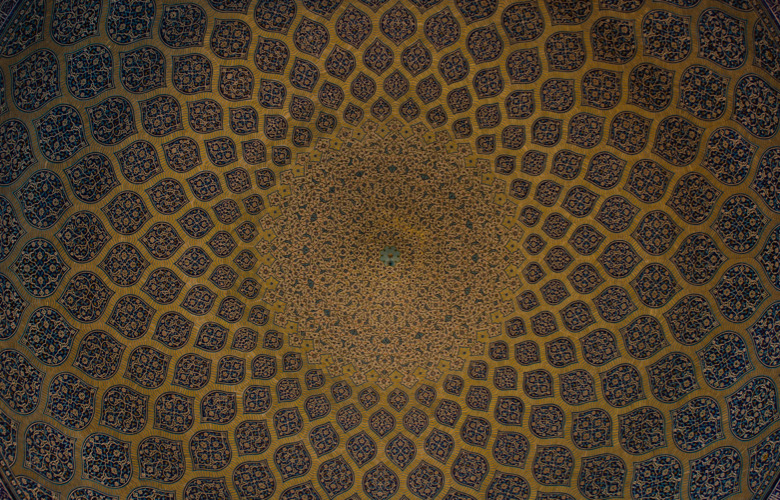
A little while ago we published an article about Khalil Oghab, the founder of Iranian circus. Before coming to international fame, the Iranian Iron Man was already known throughout his home country as a champion of the Zurkhaneh. The Zurkhaneh are athletes who are trained in a traditional system of athletics which was originally used to coach warriors in Persia and the adjacent lands.
The Zurkhaneh practice the art of Varzesh-et-Pahlavani (the heroic sport) and their training methods are an amazing regimen for any serious athlete.
The sport combines martial arts, calisthenics, strength training, and music.
The UNESCO recognizes the Varzesh-et-Pahlavani training as the world’s longest-running form of such training. As such, it is also valuable as it preserves many traditional values of the rich Iranian culture. It fuses elements of pre-Islamic Persian culture with the spirituality of Shia Islam and Sufism.
Practiced in a domed structure called the Zurkhaneh, training sessions consist mainly of ritual gymnastic movements. These lead to a form of combat practice. Which is a kind of submission-wrestling.
The structure in which Varzesh-et-Pahlavani is practiced is interesting in itself.
The ring in which the men practice is sunken a few meters below street level. This is supposedly to keep a constant, cool temperature, to aid in the wellness of the heavily perspiring athletes.
The centered, low, hexagonal ring is known as gowd. It is surrounded by seats for the audience in case of public performances.
It reminds the practitioner about religion and ethics. The music is also believed to provide energy for the athlete’s body.
In comparison, martial arts like Capoeira come to mind, where music and rhythm also play an important role.
It is the Morshed or Sardam (which means mentor) who plays the zarb (drum). Additionally, he spurs the training athletes on with chanting rhythmic poems. These are mostly by classic Persian poets. The Sardam is always a senior athlete. He sits on an elevated and decorated seat overlooking the men in the gowd.
When the athletes enter the gowd, they start united moves in sync with the beat of the drum. The exercises begin from a lying position. Then move to a bowing position. And from there to positions standing up.
Athletes do push-ups and whirl rapidly to the rhythm of the drum. They swing a pair of mil (wooden clubs) above their shoulders. They do press-ups with metal shields. And they swing the kabbadeh, a bow made of iron with metal rings and coin-like pieces hanging from its frame.
Traditionally, athletes don’t need to pay for taking part in training. It is all financed by public donations.
Often, the Zurkhaneh training venue is host to charity events and traditional events. During the performances, a young athlete will walk through the audience with a bowl in his hand, accepting donations.
More than a simple athletic activity or performance, Zurkhaneh is a concept of remembering virtues that used to be part of Iranian everyday life in the past.
In these modern times, it is an activity which allows people to take a step back, take a breath, and realign themselves with their physical and mental power.
The principles of Javanmardi (rules of the gentlemen) provide the Zurkhaneh with a code of honor, organizational principles, and rites of initiation.
These ethics are similar to Sufi ideals, emphasizing purity of heart. All Zurkhaneh athletes are expected to put themselves at the service of others.
They are also taught that building physical strength does not give them permission to put themselves above others or to become a bully. Instead, the athlete must always be guided by humility and generosity.
The athletes also have social responsibilities. These responsibilities include charity for the poor and their families, as well as other charitable giving and helping a hand within the community.
The father of Iranian circus, Khalil Oghab was a member of the respected brotherhood of Zurkhaneh athletes throughout his life.
Even during the decades when he worked in circus abroad he always aimed to follow the Zurkhaneh code of honor. He supported the athletes and circus artists who worked for him until he barely had any savings left for himself.
Now, at almost a hundred years old, Khalil Oghab, who lives in a small trailer, still cares more for others than for himself. He is a strong influence and role model for many of the young Zurkhaneh following in his footsteps.
Khalil Oghab, the Father of Iranian Circus
The Importance of Kindness in Entertainment


Liam Klenk was born in Central Europe and has since lived on four continents. Liam has always been engaged in creative pursuits, ranging from photography and graphic design, to writing short stories and poetry, to working in theatre and shows. In 2016, Liam published his first book and memoir, 'Paralian'.
Read Full Profile© 2021 TheatreArtLife. All rights reserved.

Thank you so much for reading, but you have now reached your free article limit for this month.
Our contributors are currently writing more articles for you to enjoy.
To keep reading, all you have to do is become a subscriber and then you can read unlimited articles anytime.
Your investment will help us continue to ignite connections across the globe in live entertainment and build this community for industry professionals.